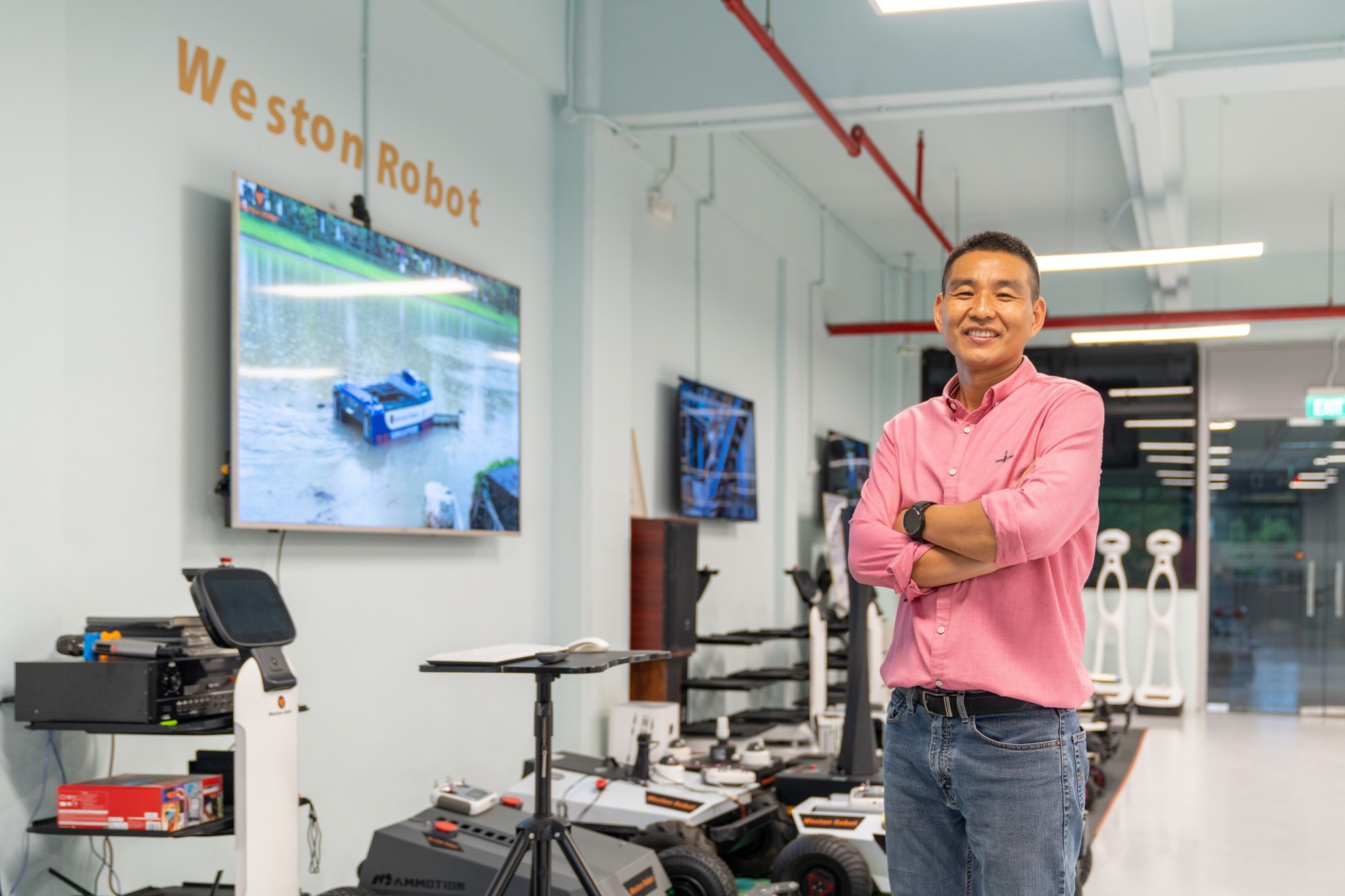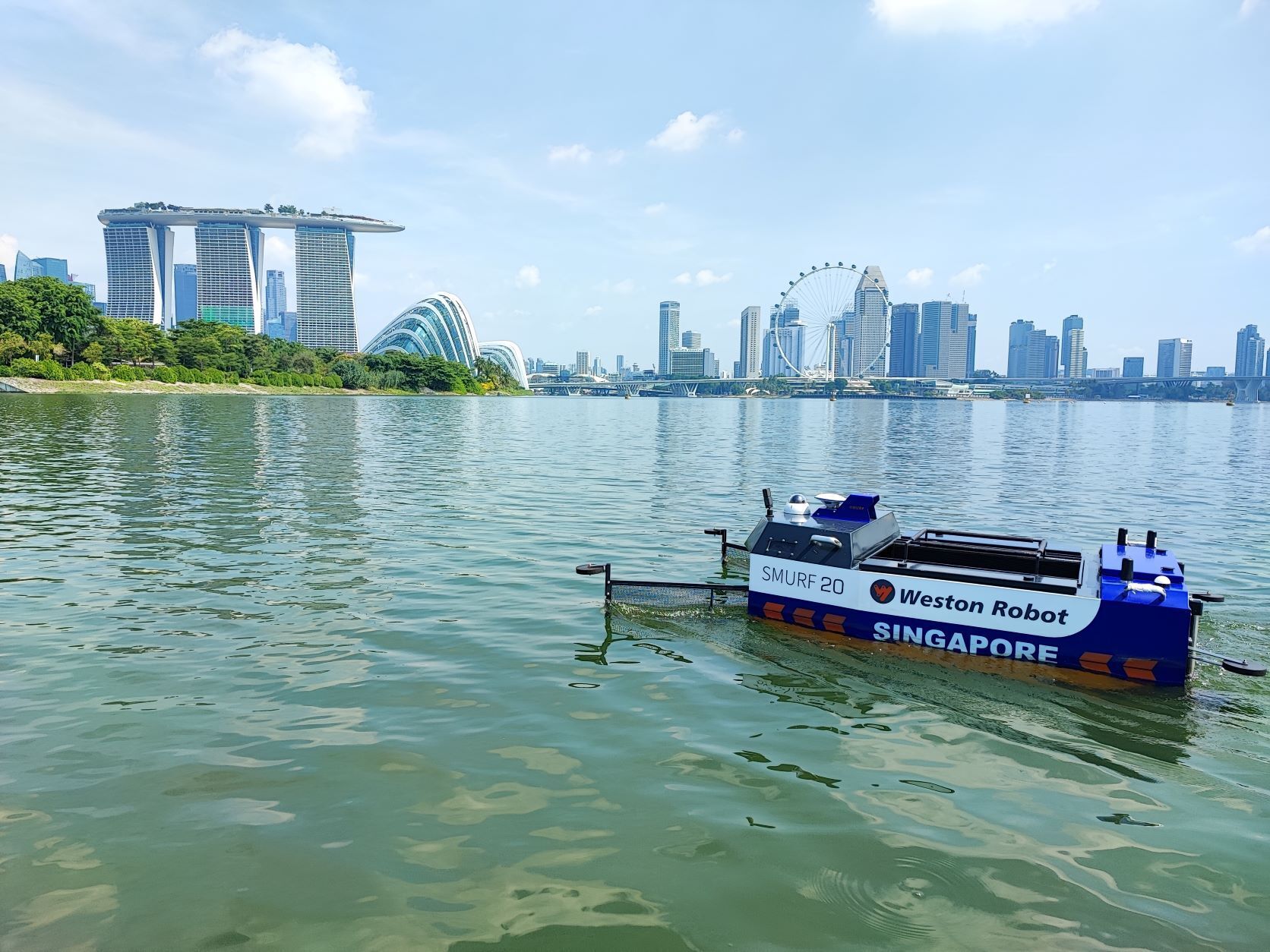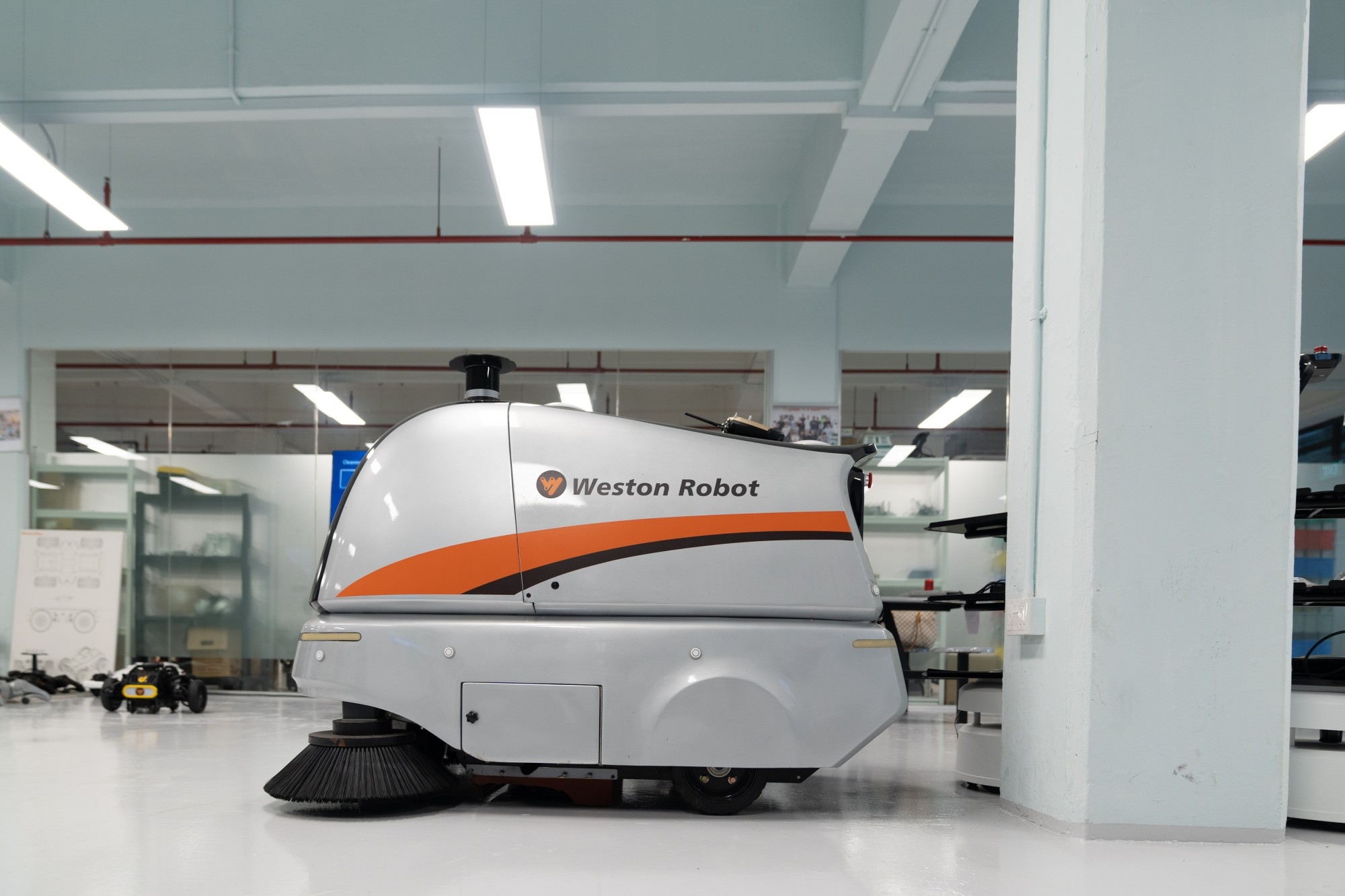Geospatial Power! Weston Robot
In the first of our #GeospatialPower series, we speak to Dr Zhang Yanliang, Chief Scientist at Weston Robot on how his robots are utilising SLA’s #geospatial data and infrastructure to solve daily challenges, increase productivity, reduce labour-intensive work and better the lives of Singaporeans.

Hi Dr Zhang! Can you briefly tell us what Weston Robot is?
Weston Robot is a Singapore-based startup that was started 5 years ago. We develop the core technology for robotics and our solutions fall into three major categories – facility management, utility and transportation.
Can you tell us more about each of these categories?
Certainly. Facility Management robots include robots for water cleaning, river cleaning, sweeping, and grass cutting to manage various environmental tasks.
Utility robots are designed for challenging and remote sites like oil and gas facilities and power plants. These robots enhance productivity by performing tasks such as security patrolling and inspections.
Transportation robots
assist in the regular or daily maintenance of airplanes, railways, and MRT
systems, reducing the workload for skilled personnel and improving
productivity.

Sounds like they are deployed everywhere! Where can we find your robots?
We deploy over 300 autonomous robots across Singapore, including sweepers at Gardens by the Bay, security patrol robots at Jurong Island, and grass-cutting mowers at Jurong Lake Gardens. These robots operate autonomously but are supervised remotely via a tablet app developed by Weston Robot. In addition, the robots return to their stations for charging.
This approach transforms traditional manual labour into higher-value, more enjoyable work. This will appeal to younger generations by offering the convenience of monitoring robots from air-conditioned environments rather than performing physically demanding tasks outdoors.
CNA and ZaoBao recently reported on NEA’s deployment of our automated robots to clean waterways in Sungei Seletar, the first project to tap on the 5G network to clean up waste in waterways. This not only helps to improve the working environment and safety of cleaners, it also raises cleaning efficiency by 80%.

Your robots use SiReNT for precise positioning. Why is it important to use SiReNT?
When we deploy robots, we want it to be fully autonomous. This is why precise positioning is so important. We use Singapore Satellite Positioning Reference Network (SiRENT) by SLA, which is a national reference network infrastructure developed to support real-time high precision positioning, navigation and tracking, up to mere centimetres accuracy.
In places like canals and rivers, robots follow preselected coordinates, adjusting to changing conditions. GPS alone lacks the centimetre-level accuracy needed.
The only solution for pin-pointing location is SiReNT.

What does it
take to work in the robotics field?
We have about 20 people in Singapore managing research and deployment. Engineering is a diverse field and our engineers are from different tertiary institutions in Singapore with most of them being full time graduates. We also have interns from polytechnics, ITEs and universities.
We have a signage in office – “Engineer is a Superstar.” We are always on the lookout for the next engineering talent and we hope to see growing interest in robotics, given its significant benefits for society and citizens.
Which is your favourite product so far?
Picking a favourite product is hard – it’s like picking your favourite child. The most impressive one to me so far, is the solution we developed to detect gas leakage. The robot uses chemical sensors that humans cannot pick up. I feel it’s an important tool that can prevent fatal accidents. This has been deployed since January this year and we hope to expand the deployment to more households.
Photo: Weston Robot
What are some of the challenges you face at Weston Robot?
Customers expect robots to be intelligent and aware of their surroundings. Ideally, robots should work seamlessly in various locations without requiring customisation and have contingency plans to ensure tasks are completed if issues arise.
However, most current robots are single-purpose devices that are sensitive to deployment conditions, meaning a robot that works in one shopping mall may not function in another due to differences in ramps and lighting. We are developing new technologies to bridge this gap, making robots more proactive and capable of making decisions, such as recognising and responding quickly to unique situations.
Another challenge is children! The number 1 ‘obstacle’ to these robots when they are at work, is children going up to these robots and turning them off! I think it’s important to educate them on robot safety, and at the same time, we can take the opportunity to engage them on the wonders and potential of robotics.

Any projects in
the pipeline?
We are looking at developing robotic guide dogs for the visibility-impaired, and this will involve extensive experimentation.
We will continue to invest in the three areas I mentioned at the beginning, as many issues remain unresolved and there is significant room for improvement. Currently, almost all infrastructure is designed for human use, presenting challenges when integrating robots with the environment. We need to continue investing in manpower for R&D to address these challenges.
SLA’s #GeospatialPower series features companies that utilises SLA’s #geospatial data, technology and infrastructure to enable innovative solutions for a smarter, safter and more sustainable Singapore.
